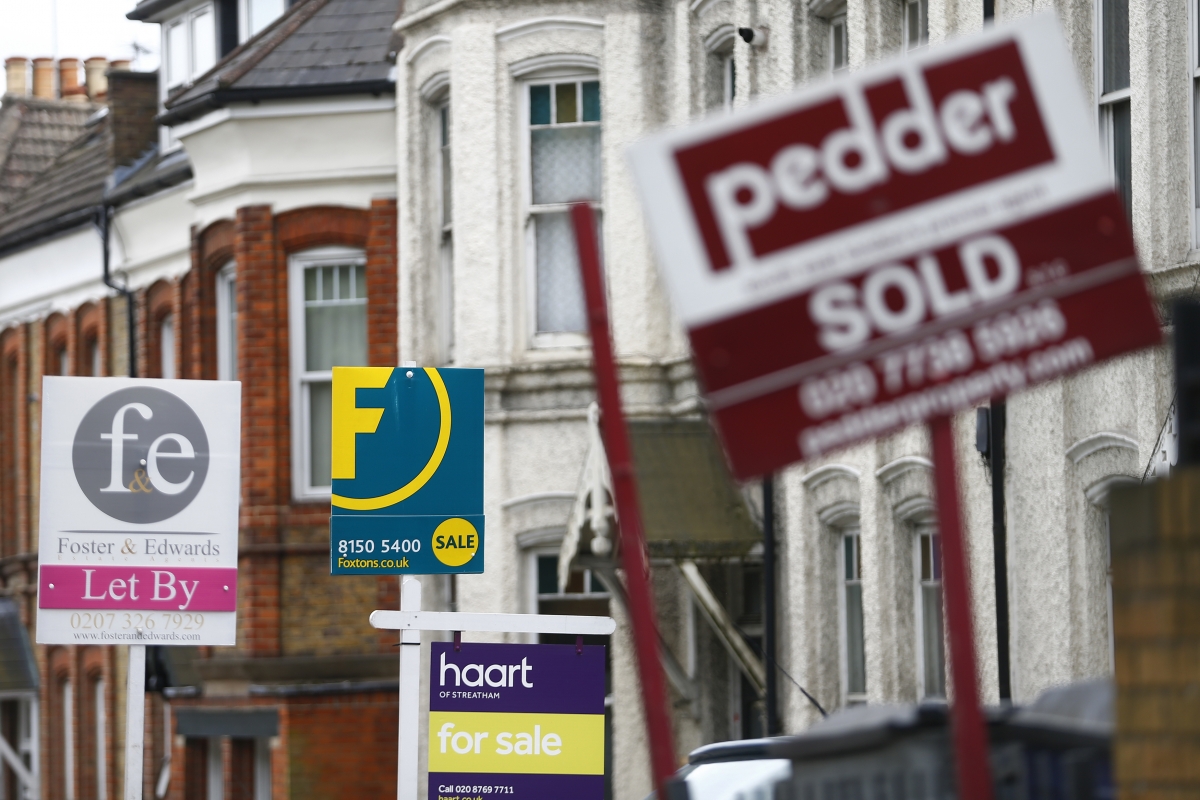
It's hard to say whether the Liberal Democrats acted out of dishonesty, stupidity or laziness when they compiled their "research" to show that the average UK house price will top £1m by 2032. Let's assume, generously, that it was a sort of honourable dishonesty motivated by a genuine desire to highlight the dire housing shortage in some parts of the country, most notably London and the south east of England. But noble motives do not justify such a ludicrous conclusion.
The Lib Dems are using an opposition day debate in parliament to table a motion on the issue of housing for young people. "Everyone deserves a decent home to call their own," said Tim Farron, the party's leader. "The aspirational and entrepreneurial classes are seeing the ladder of home ownership kicked away from under them. The government's schemes are merely a poor sticking plaster. "We have laid out a plan to help. We need radical, ambitious action to deliver the homes we need. The only answers are found in big solutions – new garden cities, allowing councils to build housing stock, and bring thousands of empty homes back into use."
All of which may or may not be true. But to get this worthy debate some media coverage, the Lib Dems have reached deep into their sphincter to pull out the most shocking nugget they could grasp – that in 16 years the average UK house price will be £1,017,990.02. How did they get there? Their starting point is the ONS average UK house price as of November 2015, which is £288,454. That was 7.7% higher than the same month a year before. It also turns out that 7.7% is the three-year average growth for UK house prices. So what did the Lib Dems do? They took this number and ran with it. To get to the £1m+ figure in 2032, they assume 7.7% growth in the average UK house price in every single year leading to it. Here's why that is ridiculous.
House price growth has been coming from a low base
The average house price in the north-east of England, for example, has still not surpassed its pre-crisis peak, according to the ONS index, and is the last remaining English region yet to do so. The East Midlands passed its pre-crisis peak in mid-2014. So did the West Midlands. Rapid annual house price growth – which peaked in the ONS data at 12.1% in September 2014 – has largely been driven by regions playing catch up. This was helped on further by London's powerful house price growth as the city wrestles with intense demand and a dearth in supply. As the regions caught back up with themselves, so the headline house price growth slowed. And it will probably slow further, so assuming 7.7% house price growth every single year is, to say the least, overconfident.
Supply will probably increase over the coming years
There are louder and louder calls to prioritise house building because of the lack of supply. Estimates for the annual housing need in England alone vary from 200,000 to 300,000. But we are are only building around 130,000 at the moment, though the number is steadily increasing. The government has doubled its housing budget to £2bn. It is relaxing planning rules and freeing up public land for development, among other initiatives. Its critics say this is not enough, and they may be right. But there is action being taken to increase house building and there is sustained political pressure to get even more homes built. That is not going to change. Things like a construction skills shortage will hold back house building, and we are unlikely to be building enough homes any time soon, but all signs point to more homes being built over the coming years. That will inevitably ease the upward pressure on house prices.
Affordability limits will be reached
As prices reach the limits of affordability for homebuyers, so demand will ease and prices soften. In London, where the ONS says the average house price is £537,000, more and more first-time buyers are struggling to get a foot on the property ladder. Nationwide data shows the average earnings-to-house price ratio for first-time buyers soaring across the past two decades. In the final quarter of 1995, the ratio was 2.1 times earnings. In the final quarter of 2015, this had reached 5.2 times. On a regional basis, this increase has been sharpest in London. In the final quarter of 1995, London's ratio was an average house price 2.7 times earnings for first-time buyers. By the end of 2015 this had become 10.1 times. These cannot keep rising exponentially, not least because wage growth is weak. Demand will bottleneck, and prices will slow their growth or adjust in a correction.
Buy-to-let has had its wings clipped
The buy-to-let market has exploded since the 1990s. Every other person seems to be a landlord. But Chancellor George Osborne has taken aim at the market as part of his plan to increase home ownership by supporting first-time buyers. He scrapped a tax relief that allowed buy-to-let investors to offset their mortgage interest against their income tax bills. And he will slap an extra 3% on top of the existing stamp duty rates for purchases of additional property from April 2016. This will deter some would-be landlords from entering the market in the future, freeing up property for first-time buyers. And some say they will now exit the market, fearful that they will be a target for more tax hikes in the future, which means even more property supply entering the market.
Interest rates will eventually rise
It may be a while off yet, but the Bank of England will eventually lift its base rate from the all-time low of 0.5% because the economy has recovered strongly from the financial crisis, though weaknesses remain, such as poor productivity. When rates rise, so will the cost of a mortgage – another dent in demand that will act as a brake on prices.
The housing market is complex
We have all been guilty, especially in the media, of making sweeping generalisations about the housing market. But focusing in on the average UK house price is far too simplistic. Regional markets vary. London is entirely different to Northern Ireland, for example. The underlying complexities are betrayed by a blunt UK figure like the £1m one the Lib Dems are making a big deal about.
No serious forecaster thinks house price growth will stay at 7.7%
If the above isn't enough to convince you that the £1m average house price figure is not just wrong, but ridiculous, then listen to the experts. The EY Item Club forecasts UK house price growth of 6.5% in 2016, 4.7% in 2017, and 4.5% in 2018. The Royal Institution of Chartered Surveyors (Rics) predicts 6% growth in 2016. Nationwide think growth will be between 3-6%. Halifax between 4-6%. Others believe it will be much lower. Capital Economics forecasts just 2% growth in 2016. So the Lib Dem forecast has fallen at the first hurdle – growth will be nowhere near 7.7% in the first year, let alone every year after that. As Martin Ellis, housing economist at Halifax, put it: "Further ahead, increasing affordability issues, as price increases continue to exceed wage growth, are likely to curb housing demand and cause price growth to ease."
Trying to forecast 16 years ahead will always be difficult, especially in something like the property market, when there are so many variables. But the most frustrating thing isn't this self-evident absurdity. It's that you do not need to embellish or hyperbolise the existing statistics and facts to show there is a serious housing problem that needs addressing. To do so undermines the issue, which is bad enough as it is.


